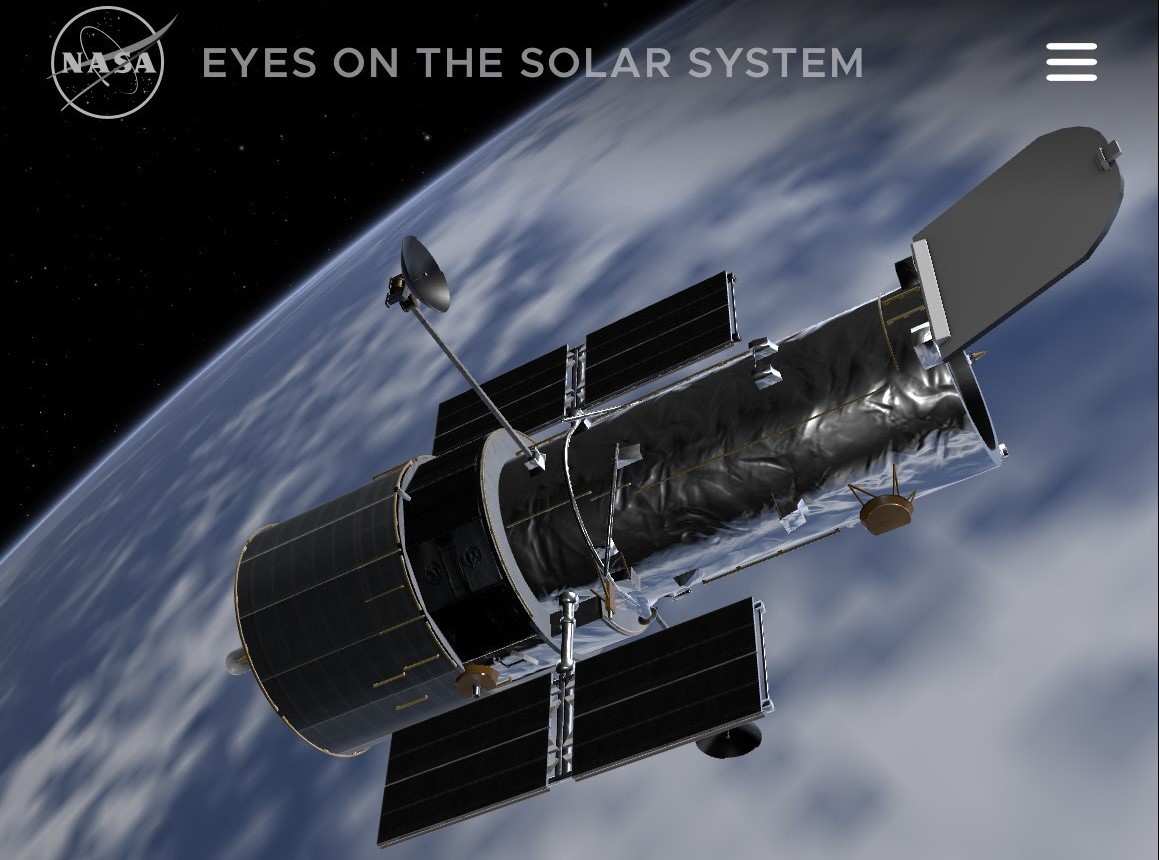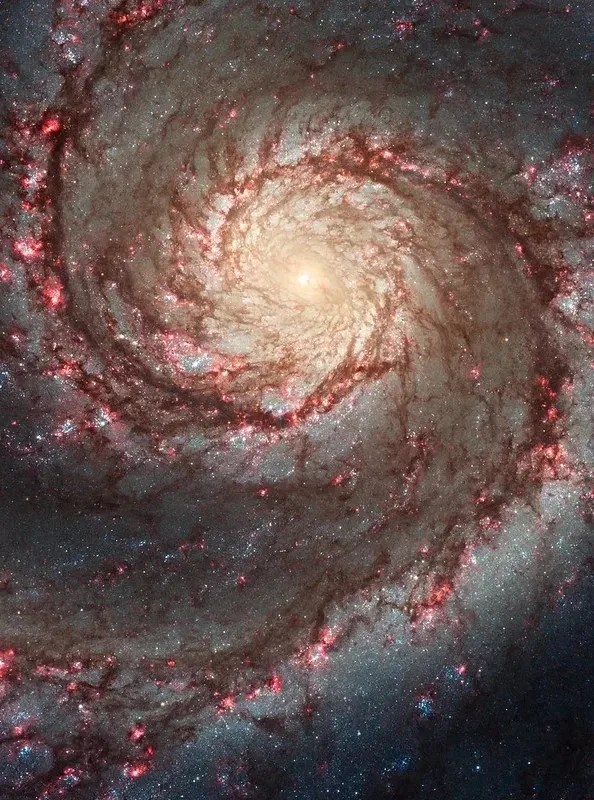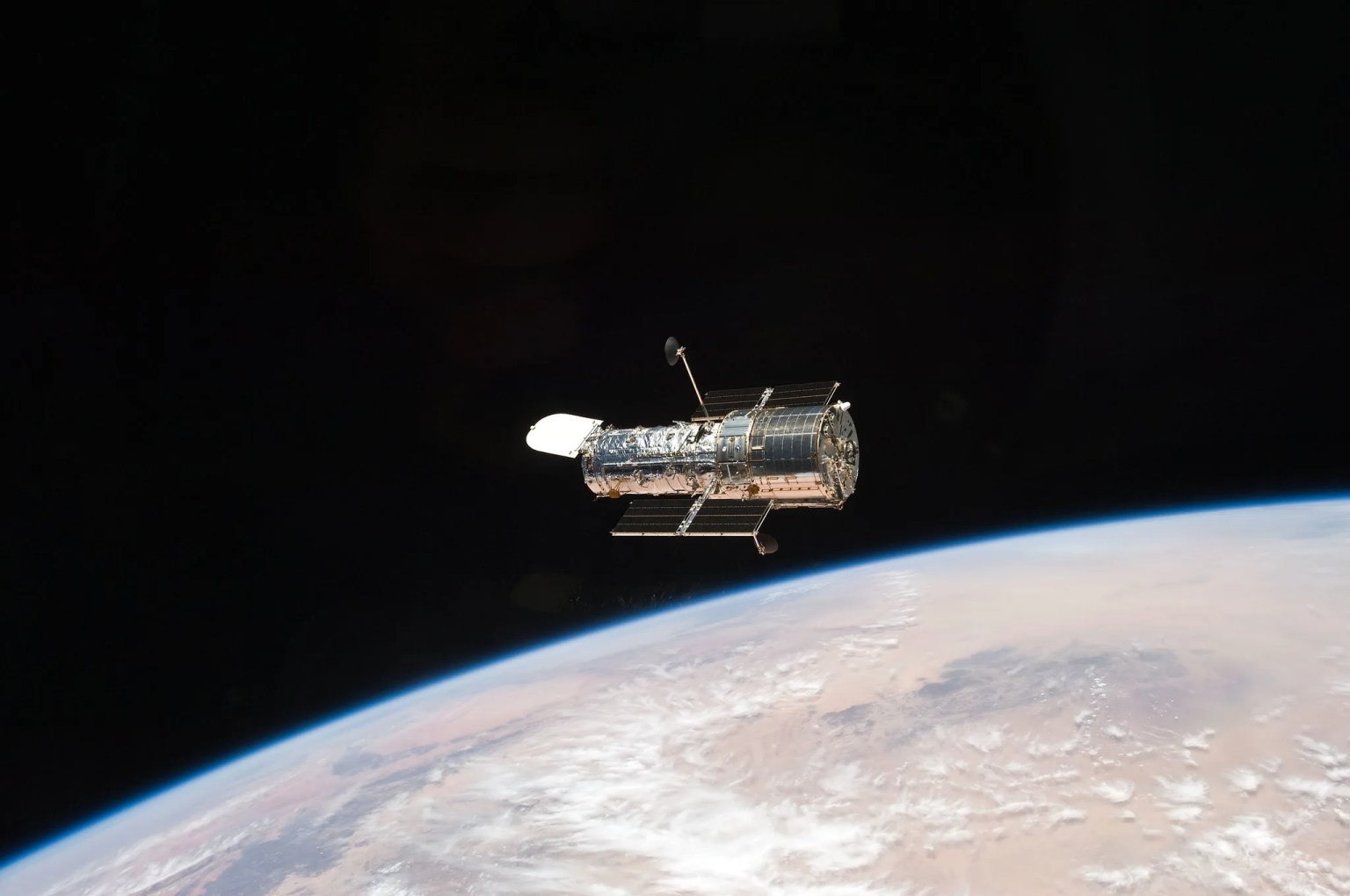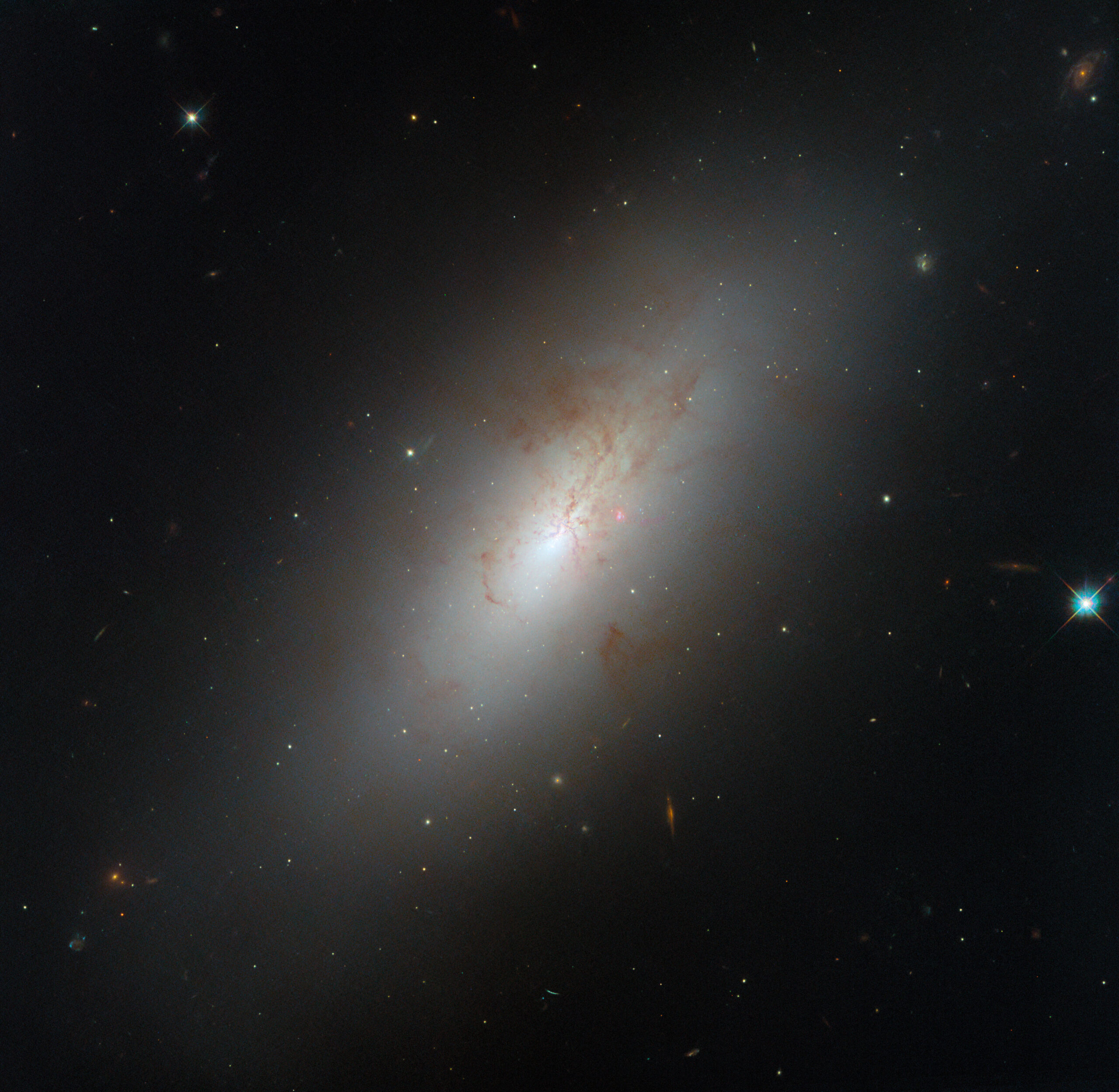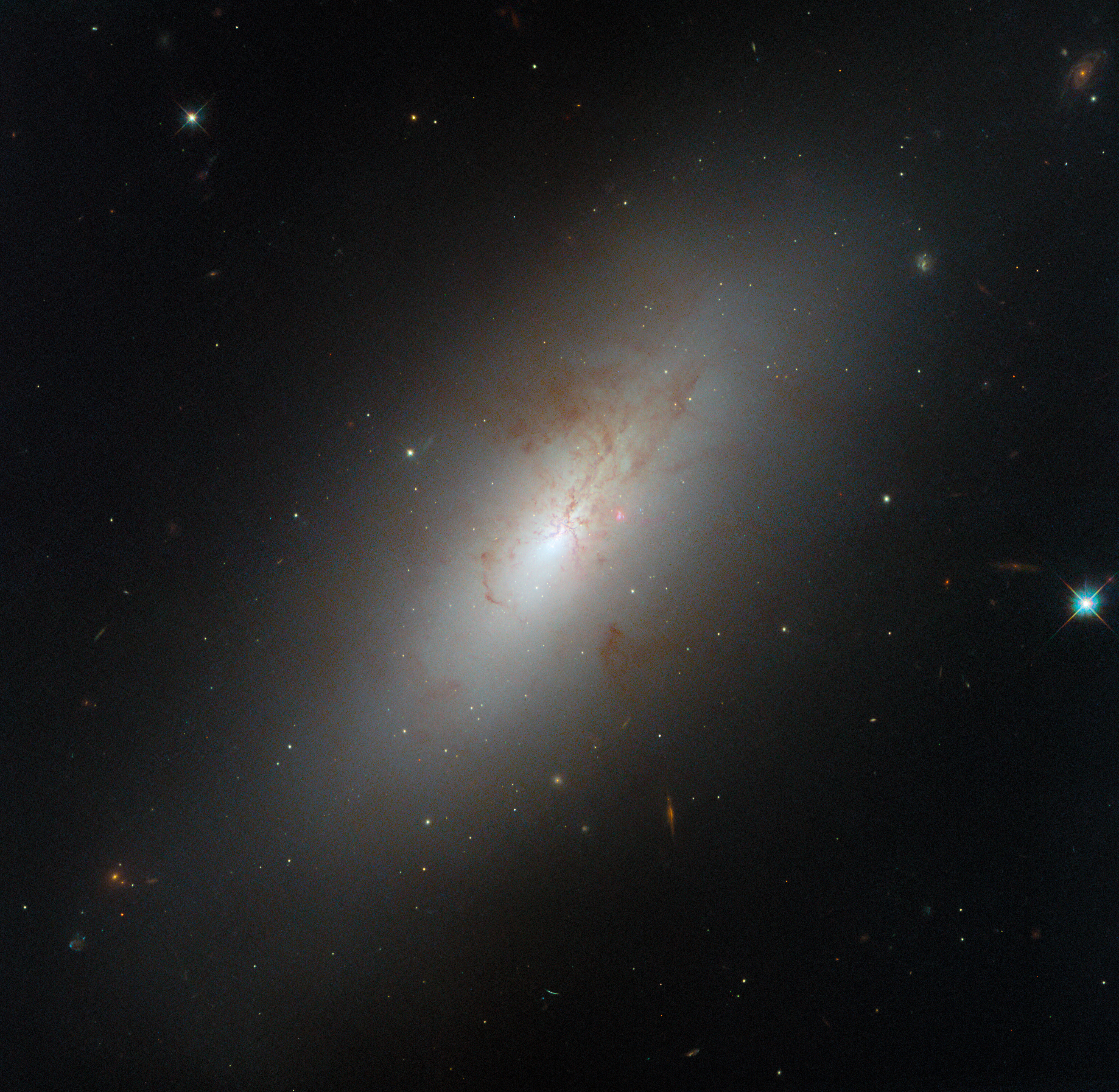Hubble Space Telescope Home Hubble Observes a Peculiar… Missions Hubble Home Overview About Hubble The History of Hubble Hubble Timeline Why Have a Telescope in Space? Hubble by the Numbers At the Museum FAQs Impact & Benefits Hubble’s Impact & Benefits Science Impacts Cultural Impact Technology Benefits Impact on Human Spaceflight Astro Community Impacts Science Hubble Science Science Themes Science Highlights Science Behind Discoveries Hubble’s Partners in Science Universe Uncovered Explore the Night Sky Observatory Hubble Observatory Hubble Design Mission Operations Missions to Hubble Hubble vs Webb Team Hubble Team Career Aspirations Hubble Astronauts News Hubble News Hubble News Archive Social Media Media Resources Multimedia Multimedia Images Videos Sonifications Podcasts E-books Lithographs Fact Sheets Glossary Posters Hubble on the NASA App More Online Activities 2 min read
Hubble Observes a Peculiar Galaxy Shape 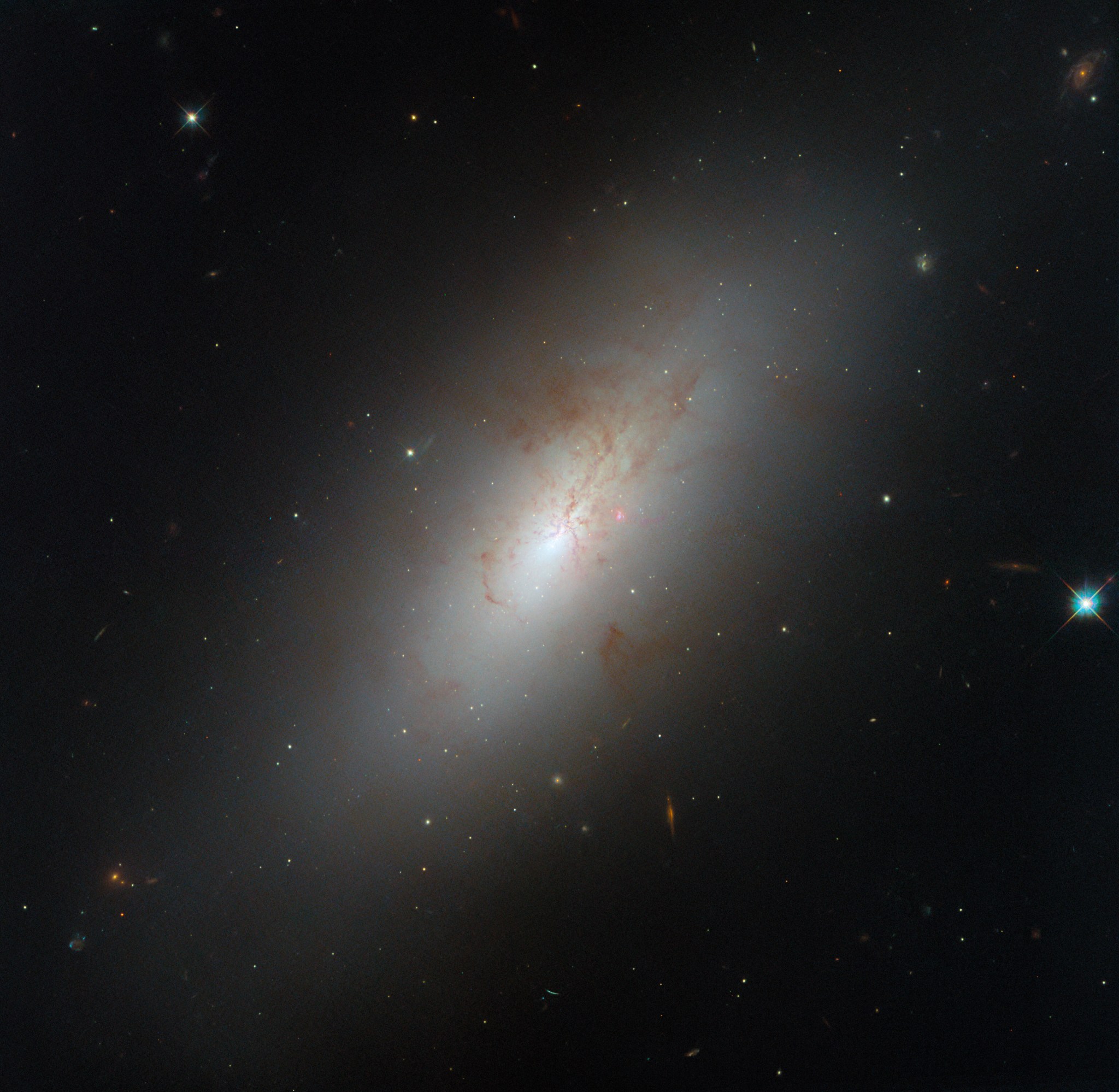 This NASA/ESA Hubble Space Telescope image features the galaxy, NGC 4694. ESA/Hubble & NASA, D. Thilker This NASA/ESA Hubble Space Telescope image reveals the galaxy, NGC 4694. Most galaxies fall into one of two basic types. Spiral galaxies are young and energetic, filled with the gas needed to form new stars and sporting spiral arms that host these hot, bright youths. Elliptical galaxies have a much more pedestrian look, and their light comes from a uniform population of older and redder stars. But some galaxies require in-depth study to classify their type: such is the case with NGC 4694, a galaxy located 54 million light-years from Earth in the Virgo galaxy cluster.
This NASA/ESA Hubble Space Telescope image features the galaxy, NGC 4694. ESA/Hubble & NASA, D. Thilker This NASA/ESA Hubble Space Telescope image reveals the galaxy, NGC 4694. Most galaxies fall into one of two basic types. Spiral galaxies are young and energetic, filled with the gas needed to form new stars and sporting spiral arms that host these hot, bright youths. Elliptical galaxies have a much more pedestrian look, and their light comes from a uniform population of older and redder stars. But some galaxies require in-depth study to classify their type: such is the case with NGC 4694, a galaxy located 54 million light-years from Earth in the Virgo galaxy cluster.
NGC 4694 has a smooth-looking, armless disk which — like an elliptical galaxy — is nearly devoid of star formation. Yet its stellar population is still relatively young and new stars are actively forming in its core, powering its bright center and giving it a markedly different stellar profile from that of a classic elliptical. Although elliptical galaxies often host significant quantities of dust, they generally do not hold the fuel needed to form new stars. NGC 4694 is filled with the hydrogen gas and dust normally seen in a young and sprightly spiral, and a huge cloud of invisible hydrogen gas surrounds the galaxy.
As this Hubble image reveals, NGC 4694’s dust forms chaotic structures that indicate some kind of disturbance. It turns out that the cloud of hydrogen gas around NGC 4694 forms a long bridge to a nearby, faint dwarf galaxy named VCC 2062. The two galaxies have undergone a violent collision, and the larger NGC 4694 is accreting gas from the smaller galaxy. This collision helped give NGC 4694 its peculiar shape and star-forming activity that classify it as a lenticular galaxy. Lenticular galaxies lack the unmistakable arms of a spiral, but still have a central bulge and disk. They also hold more star-forming gas than an elliptical galaxy. Some galaxies, like NGC 4694, aren’t as easy to categorize as one type or the other. It takes a bit more digging to reveal their true nature, and thanks to Hubble, we have the ability to uncover their secrets.
Facebook logo @NASAHubble @NASAHubble Instagram logo @NASAHubble Media Contact:
Claire Andreoli
NASA’s Goddard Space Flight Center, Greenbelt, MD
claire.andreoli@nasa.gov
Details Last Updated Oct 04, 2024 Editor Andrea Gianopoulos Location NASA Goddard Space Flight Center Related Terms Astrophysics Astrophysics Division Galaxies Goddard Space Flight Center Hubble Space Telescope Lenticular Galaxies Missions The Universe
Keep Exploring Discover More Topics From Hubble Hubble Space Telescope
Since its 1990 launch, the Hubble Space Telescope has changed our fundamental understanding of the universe.

